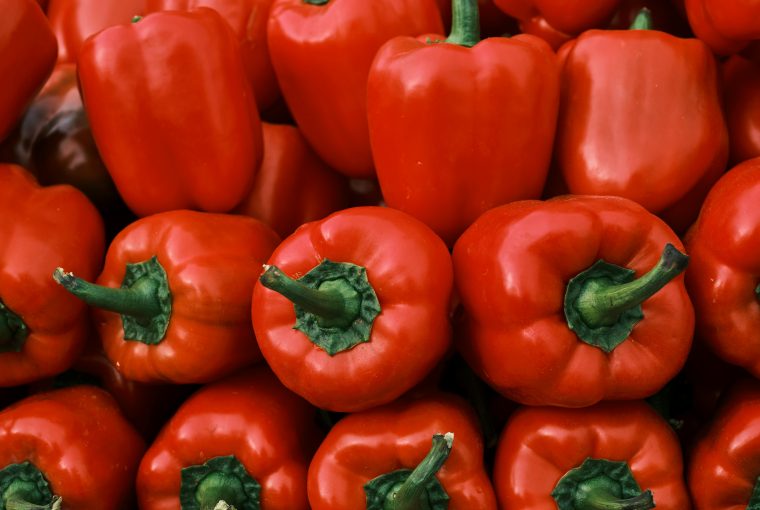Benefits of Capsicum

Capsicum, commonly known as “bell pepper,” is not only a vibrant addition to your meals but also a powerhouse of nutrients. One of the primary benefits of capsicum is its high “vitamin C” content, which is essential for boosting the immune system and promoting skin health. Just one medium-sized capsicum can provide over 150% of your daily recommended intake of vitamin C. Additionally, capsicum is rich in “vitamin A,” which supports good vision, particularly in low light, and helps maintain healthy skin and mucous membranes.
Capsicum also contains “antioxidants” like “beta-carotene” and “lutein,” which help protect your cells from oxidative damage caused by free radicals. This protection can reduce the risk of chronic diseases such as heart disease and cancer. Moreover, capsicum’s anti-inflammatory properties can help alleviate symptoms associated with conditions like arthritis and asthma, making it a valuable addition to an anti-inflammatory diet.
Capsicum Recipe
One of the most popular ways to enjoy capsicum is by incorporating it into a “Stuffed Bell Peppers” recipe. To prepare this dish, start by preheating your oven to 375°F (190°C). Cut the tops off the capsicums and remove the seeds. In a pan, sauté some onions, garlic, and ground meat (or a vegetarian alternative like lentils) until cooked. Mix in cooked rice, diced tomatoes, and your favorite spices such as “cumin,” “paprika,” and “oregano.” Stuff the capsicums with this mixture, place them in a baking dish, and cover them with foil. Bake for about 30-35 minutes, or until the capsicums are tender. For added flavor, sprinkle some cheese on top and return to the oven until it melts. This dish is not only delicious but also packed with nutrients, making it a great option for a balanced meal.
How to Store Capsicum?
To keep your capsicum fresh and crisp, proper storage is crucial. Capsicums should be stored in the “refrigerator,” where they can last up to a week. Place them in the crisper drawer, which helps maintain the right humidity level to prevent them from drying out. If you need to store capsicum for a longer period, consider freezing it. Start by washing and drying the capsicums, then slice or dice them according to your preference. Spread the pieces on a baking sheet in a single layer and freeze for an hour. Once frozen, transfer the capsicum to an airtight container or a resealable plastic bag. Frozen capsicum can be stored for up to six months and is perfect for use in cooked dishes like soups, stews, and stir-fries.
Capsicum Calories
Capsicum is a low-calorie vegetable, making it an excellent choice for those looking to maintain a healthy diet without sacrificing flavor. A medium-sized capsicum contains approximately “25-30 calories,” making it a great option for adding volume and nutrients to your meals without significantly increasing calorie intake. Despite being low in calories, capsicum is high in essential vitamins, minerals, and fiber. Its high water content also helps keep you hydrated and full, making it a satisfying addition to salads, stir-fries, and other dishes.
Growing Capsicum
Growing your own capsicum can be a rewarding experience, whether you have a garden or a small balcony. Capsicum plants thrive in warm, sunny conditions and require well-drained soil. To start, sow capsicum seeds indoors about 8-10 weeks before the last expected frost in your area. Once the seedlings are strong enough and the outdoor temperatures are consistently warm, transplant them into your garden or containers. Ensure the plants receive at least six hours of sunlight daily, and water them regularly, keeping the soil consistently moist but not waterlogged. As the plants grow, you may need to provide support with stakes or cages to help them bear the weight of the peppers. With proper care, you can expect to harvest your capsicums in about 60-90 days, enjoying fresh, homegrown vegetables all season long.





